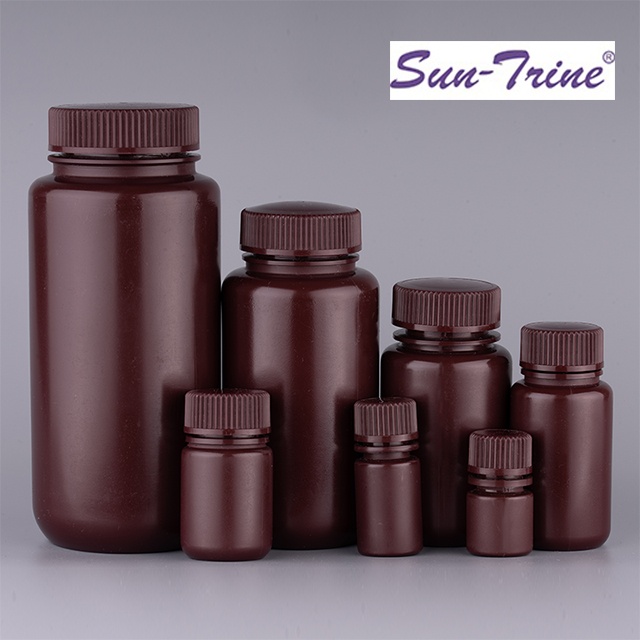Introduction
In the intricate realm of laboratory work, where precision and reliability are paramount, the choice of laboratory equipment becomes a critical consideration. One often-underestimated factor is the chemical compatibility between reagents and the containers holding them. In this article, we will explore the significance of chemical compatibility, with a specific focus on narrow-mouth polyethylene reagent bottles. By understanding the properties of polyethylene, identifying chemicals and reagents, and considering manufacturer guidelines, we can make informed decisions to ensure the success and integrity of laboratory experiments.

Understanding Chemical Compatibility
Chemical compatibility, in the context of laboratory containers, refers to the ability of the container material to resist reactions with the stored reagents. The consequences of neglecting chemical compatibility can range from altered experimental outcomes to compromised safety. It is crucial to comprehend the potential risks associated with incompatible combinations and the importance of preventing such interactions.
Properties of Polyethylene Relevant to Chemical Compatibility
- Chemical Resistance of Polyethylene
Polyethylene's inert nature and its impact on chemical interactions
Exploration of polyethylene's resistance to common laboratory reagents, emphasizing its role in maintaining the purity of stored chemicals.
- Temperature Resistance
1. Discussion on the impact of temperature on chemical interactions
2. Insight into how polyethylene handles a broad range of temperatures, ensuring stability in diverse laboratory conditions.
Identifying Chemicals and Reagents
- Compilation of Common Chemicals:
Overview of chemicals commonly used in laboratory applications
Classification of reagents based on their chemical properties, laying the groundwork for assessing compatibility.
- Examples of Incompatible Chemicals:
1. Identification of incompatible chemical combinations and their potential risks
2. Highlighting the importance of recognizing and avoiding these combinations in laboratory practices.
Considerations When Choosing Narrow-Mouth Polyethylene Reagent Bottles
- Matching Bottle Material with Specific Reagents:
Tailoring the choice of reagent bottles to the chemical characteristics of stored reagents
Utilizing compatibility charts or documentation provided by the manufacturer to guide decision-making.
- Special Considerations for Corrosive or Reactive Substances:
1. Addressing challenges posed by corrosive chemicals and exploring protective measures
2. Evaluating alternative materials for reagent bottles when dealing with highly reactive substances.
- Impact of Concentration and Storage Duration:
1. Analyzing how the concentration of reagents affects compatibility
2. Considering the effects of long-term storage on polyethylene and the potential need for alternative storage solutions.
Manufacturer Guidelines and Recommendations
- Overview of Guidelines:
Highlighting the importance of adhering to guidelines provided by reagent bottle manufacturers
Exploring how these guidelines contribute to informed decision-making and the prevention of compatibility issues.
- Accessing Compatibility Charts and Documentation:
1. Guidance on accessing and interpreting compatibility charts and documentation
2. Illustrative examples of how manufacturers communicate chemical compatibility information to users.
Real-world Examples and Case Studies
- Illustrative Examples
Showcasing instances where careful consideration of chemical compatibility led to successful outcomes
Highlighting the positive impact of informed decision-making on laboratory experiments.
- Case Studies
1. Examining situations where neglecting compatibility resulted in negative consequences
2. Extracting lessons learned and identifying best practices from real-world experiences.
Conclusion
In the dynamic landscape of laboratory research, the importance of chemical compatibility cannot be overstated. Choosing the right narrow-mouth polyethylene reagent bottles involves a nuanced understanding of polyethylene properties, a thorough identification of chemicals and reagents, and a commitment to following manufacturer guidelines. By integrating these considerations into our decision-making processes, we not only enhance the reliability of experiments but also contribute to a safer and more efficient laboratory environment. As we navigate the intricate web of chemical compatibility, the selection of the right reagent bottles emerges as a crucial step in the pursuit of scientific excellence.
Related Products





